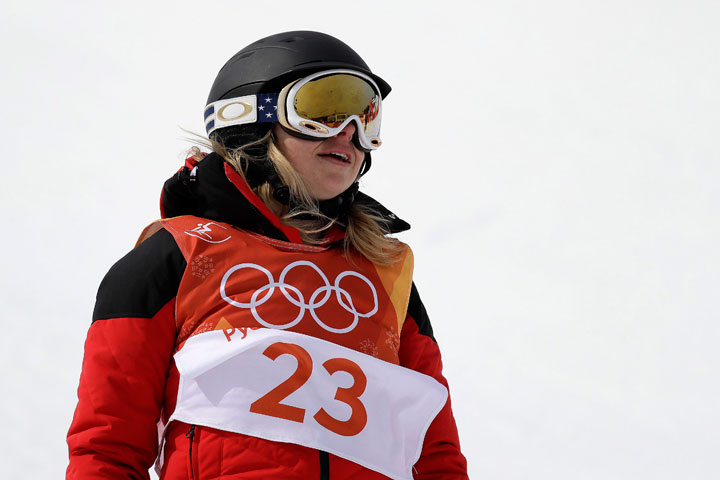The words left Liz Swaney’s lips without an ounce of irony. No telling curl of the lips. No wink. Nothing. She meant them. All of them.

“I didn’t qualify for finals so I’m really disappointed,” the 33-year-old Californian said after coming in last in the 24-woman field during Olympic women’s halfpipe qualifying on Monday.
She seemed … surprised.
Even though her score of 31.40 was more than 40 points behind France’s Anais Caradeux, whose 72.80 marked the lowest of the 12 skiers to move on to Tuesday’s medal round.
Even though Swaney finished in about the same position in each of the dozen events she competed across the globe over the last four years in the run-up to the Pyeongchang Games.
Even though her two qualifying runs at Phoenix Snow Park featured little more than Swaney riding up the halfpipe wall before turning around in the air and skiing to the other side. It was a sequence she repeated a handful of times before capping her final trip with a pair of “alley oops”, basically inward 180 degree turns more fitting for the local slopes than the world’s largest sporting event.
The Olympics is the latest in a series of quixotic pursuits that include running for governor of California as a 19-year-old student at Berkeley (she lost to Arnold Schwarzenegger) to trying out for the Oakland Raiders cheerleading team, to mounting a push to reach the Olympics as skeleton racer for Venezuela.
She only started skiing eight years ago and only got serious about it after the skeleton thing didn’t take.
Her performance has Hungary, the country she competed for, re-thinking its selection procedures.

Get breaking National news
“We, the Hungarian Olympic Committee, have to learn the lessons from this case, and we must consider rethinking our nomination procedures,” a Hungarian team spokesman told Reuters via email.
“We shall be doing this, with the assistance of the appropriate experts, in the near future,” the spokesman added.
But how did she get to the Olympics? To be clear, she did nothing wrong or illegal.
After raising funds through online donation websites to help fuel her Olympic ambitions, Swaney qualified for Pyeongchang due to the sheer volume of competitions she took part in.
Needing to consistently finish in the top 30 at World Cup events to make it to South Korea, Swaney persisted with easy runs, sometimes not even attempting tricks, to make sure she did not fall and always recorded a score.
Some commentators, however, questioned whether Swaney’s performance lowered the standard and integrity of the Olympics.
Swaney joined Team Hungary, the connection coming from her Hungarian maternal grandfather, who she said would have turned 100 on Tuesday. She’s spent more than her fair share of money hopscotching continents chasing a dream she says was hatched watching the 1992 Games.
While Swaney – whose LinkedIn profile highlights three undergraduate degrees from Cal-Berkeley, a master’s in Real Estate Development and Finance from Harvard and funds her pursuits while working for a pair of Bay Area startups – points out she was just one of 24 women in the world to make it to Pyeongchang, part of the reason is due to IOC rules that limit the number of athletes a country can enter in a given sport.
It was not easy and it was not cheap. Yet she kept at it. Keeping at it is kind of her thing. No matter how you try to frame the questions, the answers come back the same. She swears this isn’t a publicity stunt. This is real.
“I’m trying to soak in the Olympic experience but also focusing on the halfpipe here and trying to go higher each time and getting more spins in,” said Swaney, who wore bib No. 23 and stars-and-stripes goggles not as some sort of statement but basically because they were the least expensive in the athlete’s store.
Swaney’s fellow competitors are supportive of her Olympic dream.
“I’m a pretty open-minded person,” said France’s Marie Martinod, a silver medallist in halfpipe in Sochi four years ago. “She’s part of the game. It’s a game, just (a chance) to share stuff and be able to see the whole world (come) together for once.”
Canadian Cassie Sharpe, who ended up winning gold and revels in pushing the boundaries each time she drops in, isn’t sure being competitive should matter. Even at the Olympics.
“If you put in the time and put in the effort to be here,” said Sharpe, “you have as much of a right to be here as I do.”
–With files from Reuters






Comments